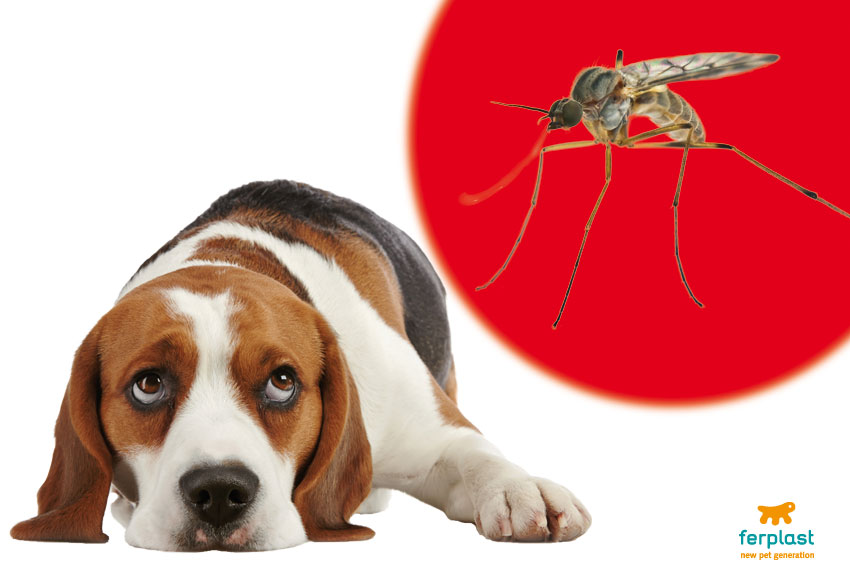We should perk up our ears as the days grow longer and the air grows warmer. Spring thunder showers awaken nature and, with her, insects and parasites. These little pesks can present a serious danger, infesting our dogs with heartworm.
Heartworm, also known as Cardiopulmonary Filariasis or Dirofilariasis, is a grave condition that affects the heart and is caused by a parasitic infestation called Dirofilaria immitis. Dogs, of all household pets, are those most prone to this condition. How does the parasite get there and what do mosquitoes have to do with it?
THE LIFE CYCLE OF THE PARASITE
The Dirofilaria immitis parasite has an indirect life cycle, which means that it does not directly infest the final host (the dog), but an intermediary host when it is still in the larva stage. Various mosquitoes can carry the larva, including the Culex and Aedes. After a brief period of maturation in the mosquito, the larvae enter the host animal via the insect’s sting and settle just below the skin. The reason we have to be more careful when temperatures get milder is that the mosquito is the insect that passes the parasite along… and when it gets warmer, that’s when they come!
But it’s not over yet! The larvae of the parasite, once inside the dog’s body, mature under the hide and then enter the blood stream. Their final destination is the right chamber of the heart and the pulmonary arteries, where the parasites become adult and, in their new home, couple and then release the larva of their transmittable offspring, known as microfilaria, into the dog’s blood. When this happens, uninfected mosquitoes stinging the dog will get infested and then go on to infest other dogs in a non-ending cycle.
SYMPTOMS AND DANGERS OF HEARTWORM DISEASE
Fortunately, heartworm disease cannot be transmitted from dog to man and, furthermore, man is not a suitable habitat in which the parasite can mature. Heartworm in dogs, on the other hand, can be very dangerous because it can cause serious damage to the animal’s heart and eventually lead to its death if the infestation is not halted and eliminated in time. The adult parasite has the shape of a round worm and can reach lengths of up to 15 cm. What are the symptoms we should watch out for?
Up to six months can go by from the moment of infection to when the first symptoms become noticeable. After this time, the dog’s appetite will wane and he will tire very easily, becoming depressed and refusing physical exercise. In the worst of cases, he will get a cough. The symptoms vary depending on the number of adult parasites there are in the heart muscle. The more parasites, the harder the heart has to work to make sure enough blood circulates properly. While not all affected dogs will show signs of illness, they can still be a reservoir from which the parasites are spread.
TREATMENT AND PREVENTION
If you think your dog may have been infested by heartworm, go immediately to your vet. A simple examination will show whether there is an infestation and treatment can be prescribed. Although the illness can be cured, the heart, having adapted itself to the parasites, may nonetheless have been irrevocably damaged and your dog may still show signs of cardiac insufficiency although he is healthy. Considering that the chances your dog will be stung by a mosquito this summer are rather large, prevention is an absolute must.
There are various methods to prevent heartworm. Your vet can give him a shot once a year or once a month, you can give your dog a pill or apply a “spot-on” (topical) solution to his hide. If you opt for the monthly treatment, make sure you keep to the schedule so that your four-legged buddy remains completely protected. Whatever you do, start by going to see your vet to make sure your dog is not infested with adult parasites, and then ask him or her to advise you on the best way to prevent your dog from becoming a host.
Our beloved dogs give us their hearts… so it’s up to us to keep them healthy! ![]()


